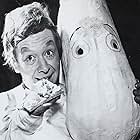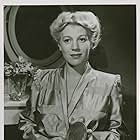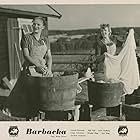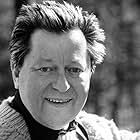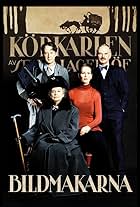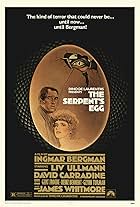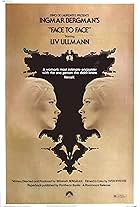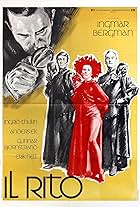David Lynch loves Ingmar Bergman; David Lynch loves Francis Bacon. Did Ingmar Bergman love Francis Bacon? Nobody knows, yet in this case he outclassed Lynch himself in Bacon-inspired dwelling on nightmarish ghastly room imagery. The most dazzling thing in this bewilderingly mazy art piece (dark glasses suit well) is that his aged, brooding auteur is never sick and tired of being sick and tired. Prompted by a veritable imp of perversity, Bergman seems to lose his faith in faith whilst gathering flesh and weight in the perusal of its horrific epiphanies.
Once thrown Satan in the blissful reign of hell, God seems to take his place in the patronage of Evil. The 'two blessed' are therefore haunted by God in an 'endorcism' that is much more appalling than any possession by Satan could ever hope to be. In hear naive trust, Viveka (Harriet Andersson's acting is beyond any praise, and for the whole footage her face captures an uncanny likeness - "Persona" docet - with Ingrid Thulin's, as much as now and then Per Myrberg's features overlap the 'mask' of Erland Josephson, while we hardly recall the bold gallery of "Fanny & Alexander" portraits to recover the memory of Christina Schollin - here starring as Annika - embodying there the farcical and tragic Lydia Ekdahl) is prevented from recognizing the spreading of arsenic, electricity and bloodcurdling mutters through her flat and her brain as insane acts of God (or the neighborhood's?). This fusion of daily routine and preternatural innuendos is so effectively handled and paced that any effort contrived to the same purpose by 70-80's best horror movie artisans or even by Roman Polanski wilts beside it. Film-making is not salvation; nor it is an exterior point of view from which the director or the spectator can shed a light of rationality. We are not born guilty: we are guilty to be born.
Viveka and Sune are overwhelmed by the fetishistic 'signs' of a paradoxically true faith that walks hand in hand with a genuinely true despair: veils, curtains, candles, sunglasses, umbrellas, ominous embroidered pillows and ominous drawings dropped like poison through the mail-slot. The majestic consolation established in the first awe- inspiring shot with the terracotta facade of Uppsala Cathedral, turns to agoraphobic self-reclusion in the apotropaic lumber room overlooked by the symbol of a creepy pop-eyed Seer (a metamorphic betrayal of its Gothic outlines - the spires and the rose window - as much as the friendly shadows of its interior reveal their conspiracy in the slices of darkness spluttered among the chambers of a deadly matrimonial stage).
There is no hope to quench the agony of mind because there is no real point in relief or healing. Now both whispers and cries are useless, when every utterance mingles in the thick layers of a hopelessly anti-symbolic photography. Bacon himself had given up shouting at this time.







